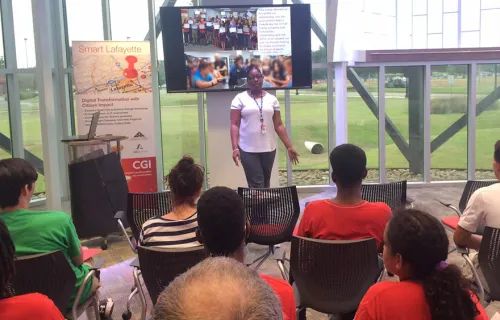We use our own and third-party cookies to provide a smooth and secure website. Some are necessary for our website to function and are set by default. Others are optional and are only set with your consent to enhance your browsing experience. You may accept all, none, or some of these optional cookies.
We’re going through a bit of a quiet revolution in the technology industry at the moment. While much of the media spotlight in recent years has focused on digital transformation – large-scale seismic disruptions that are changing organizations and industries – there’s a more subtle transformation occurring in the way that we build and use digital solutions. Human-centered design, or design thinking focuses on making technology more personal and intuitive. It emphasizes the user’s experience over the technology itself. But as we consider users’ experiences it’s important to remember which users we mean. Are we building solutions for everyone?
I’ve thought about this question often as I’ve become more involved in the STEM@CGI program. The demand is high in the United States for talent in science, technology, engineering and math (STEM) fields, yet certain populations are still significantly underrepresented in these fields. Put another way – do the people who are building these transformative solutions resemble the people who are using them? There has been quite a bit of attention paid to the dearth of women and minorities in STEM fields, but significantly less focus on roles for people with different abilities. To be clear, this is not just a matter of inclusion and accessibility (though, these are important factors to consider). Incorporating diverse perspectives – different ways of interpreting the world – into the human-centered solutions we create benefits everyone.
CGI recently held a STEM camp in Bloomfield, CT that was special for a few reasons. First, we co-hosted the camp with the American School for the Deaf, the oldest permanent school for the deaf in the United States. Teaching programming and computer-building skills to these talented and motivated students helps to inspire a new generation of technology talent to share their unique voices to the conversation of digital transformation. I can assure you, the experience was equally inspiring for us, and we learned as much (if not more) from the students in return.
This STEM camp is also special because it helps to show that business partnerships can sometimes transcend business. CGI was fortunate to team-up with the global health services company, Cigna, to hold the camp. While we’ve worked together to build IT solutions before, it is tremendously fulfilling to be able to work together on a project around a set of shared values and passions. Whether the mission is to improve the health, well-being and sense of security of the people they serve, or to help clients succeed through outstanding quality, competence and objectivity, both organizations are committed to making a positive difference in the communities we serve. I can’t think of a better example of this spirit than our partnership with the American School for the Deaf.
Partnering to empower through STEM education
This video provides a glimpse into what makes this STEM camp so special. I’d like to give special thanks to the staff and students of the American School for the Deaf for welcoming us and allowing us to be a part of this incredible experience. Additionally, I’d like to thank our partners at Cigna for sharing their time, talent and vision to make this STEM camp such a success. Enjoy.
About STEM@CGI
STEM@CGI is a nationwide K-12 program that aims to train and mentor young people for STEM careers. It strives to provide experiences that inspire students with the drive to learn for a bright future in the digital workforce.


